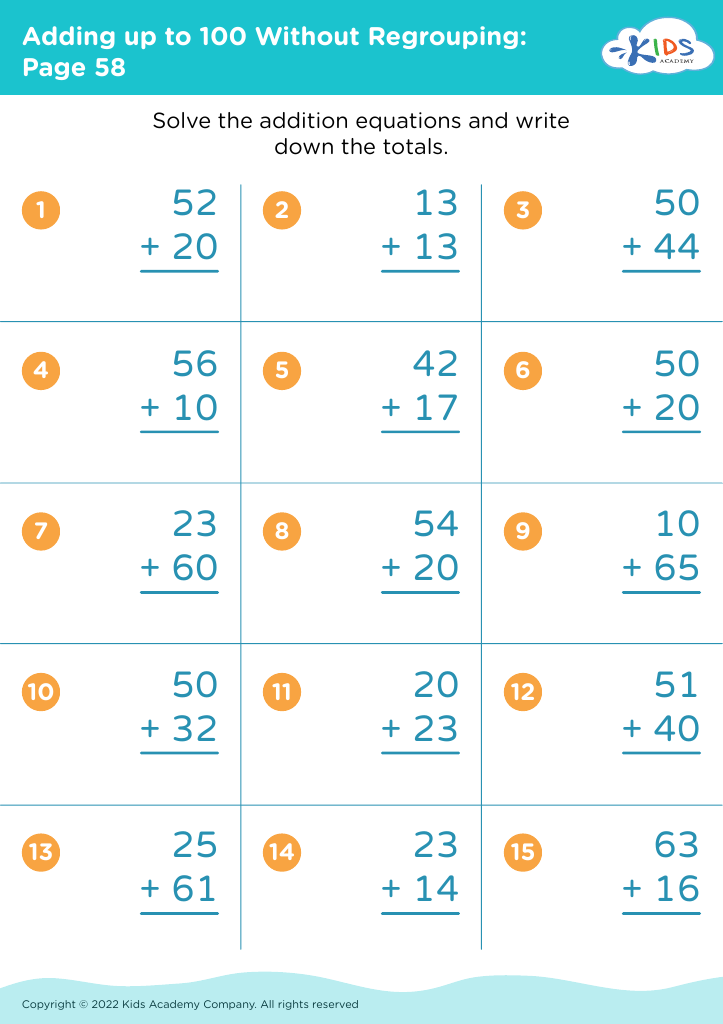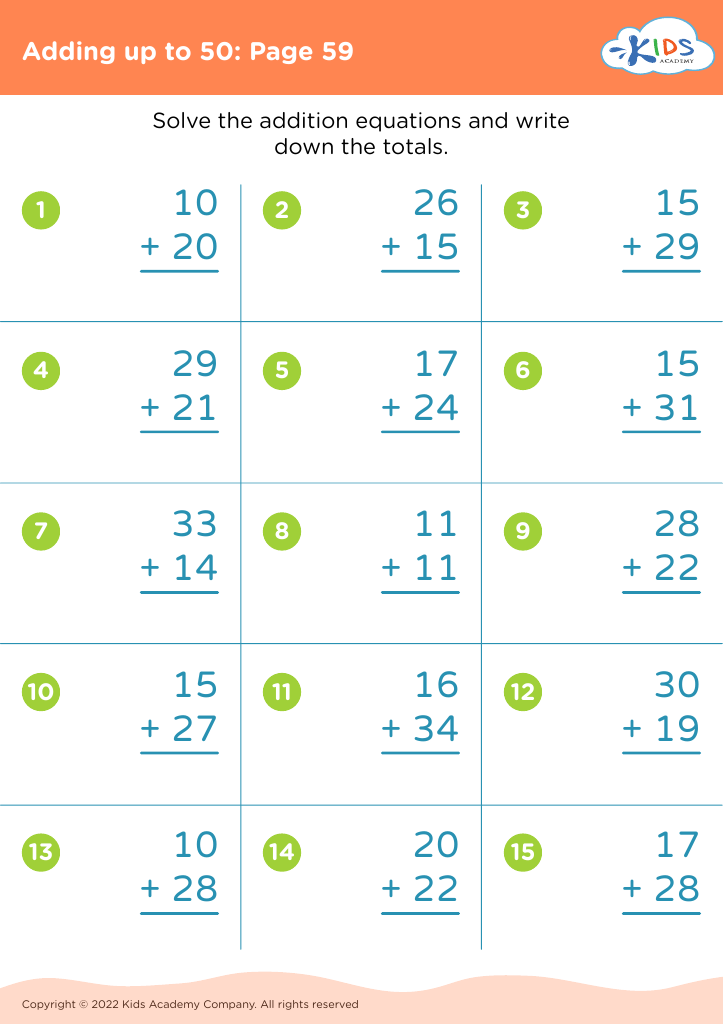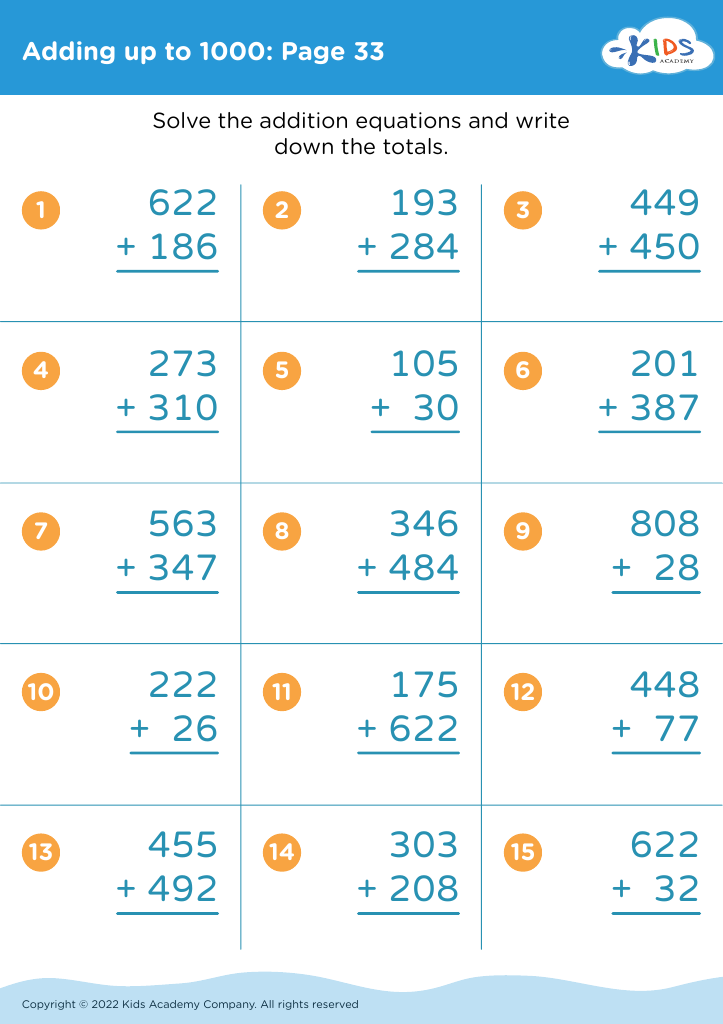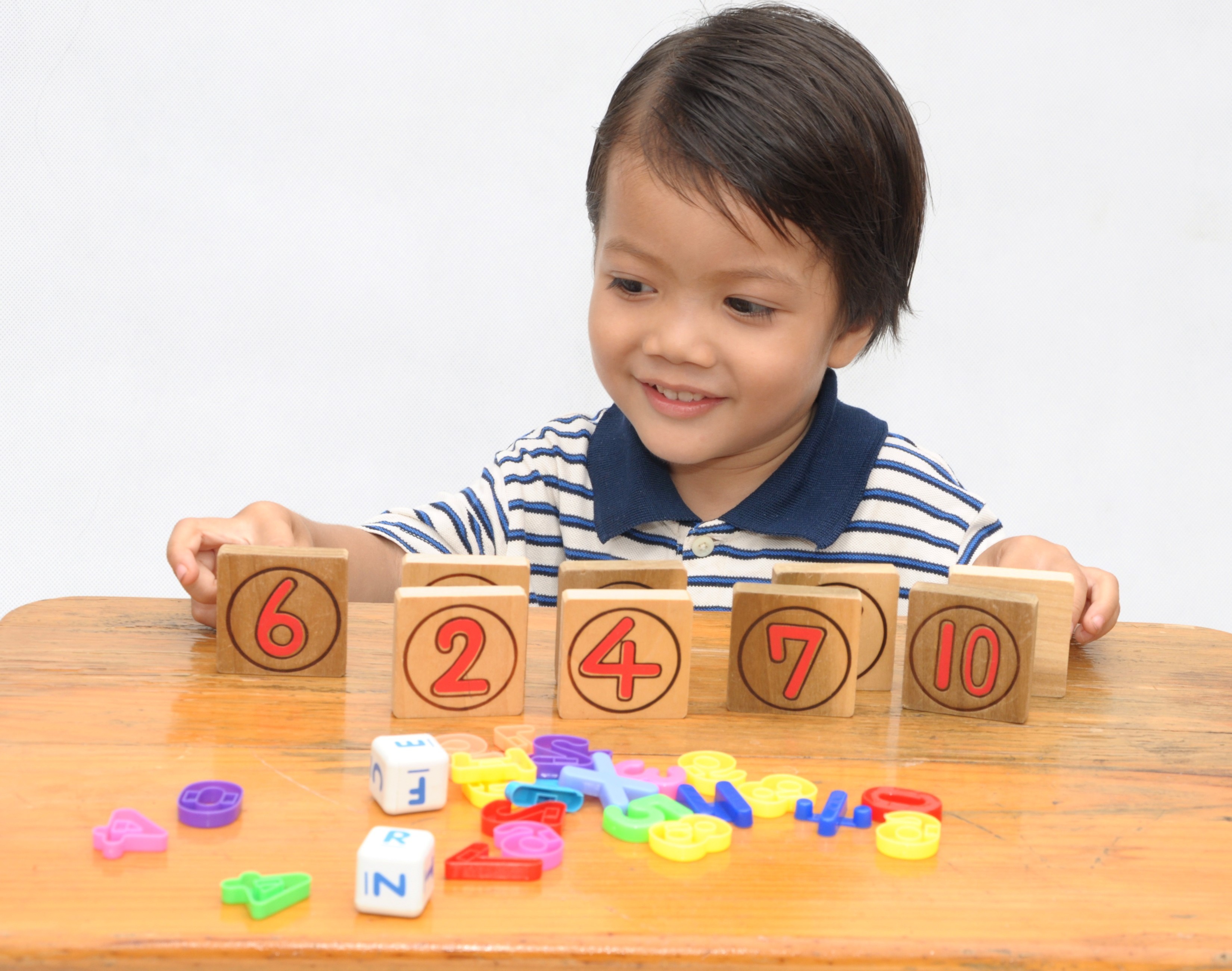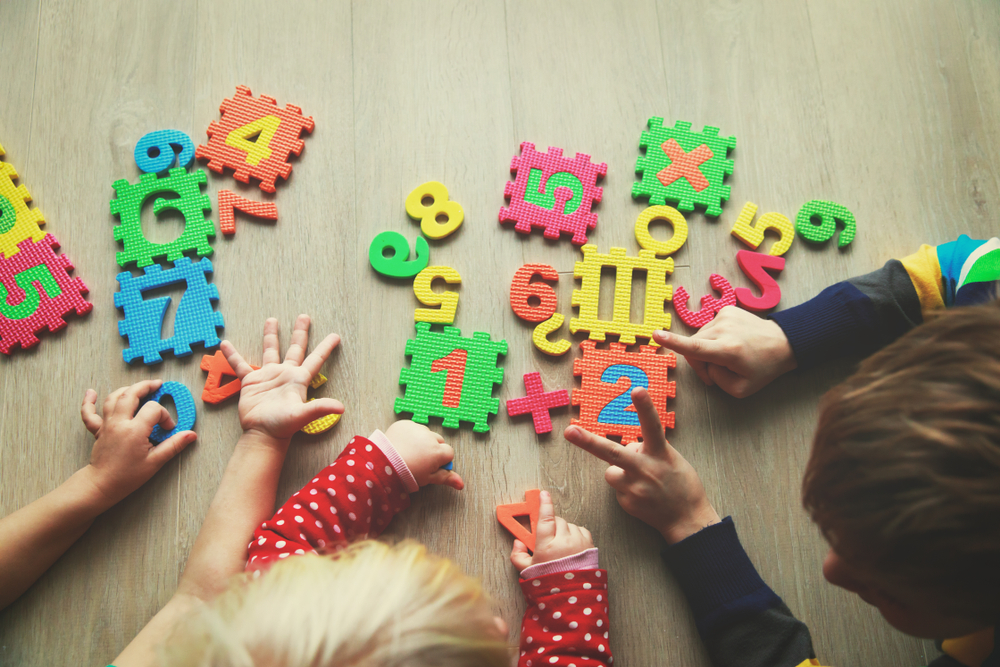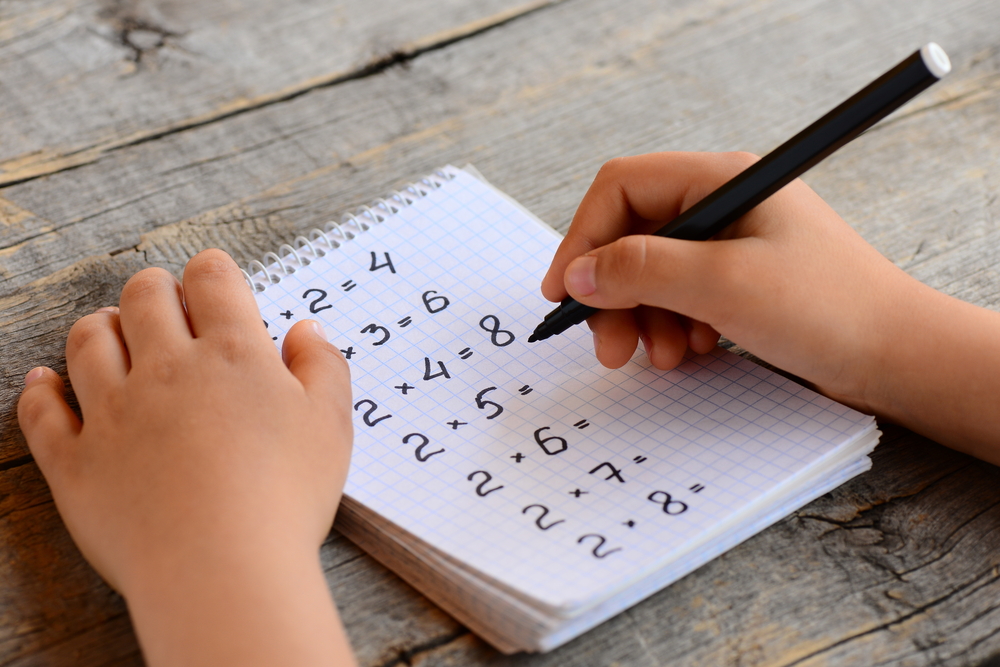Understanding sequence Addition & Subtraction Worksheets for Ages 6-8
4 filtered results
-
From - To
Enhance your child's mathematical skills with our "Understanding Sequence Addition & Subtraction Worksheets" designed specifically for ages 6-8. These thoughtfully crafted worksheets help young learners master the basics of addition and subtraction while building their understanding of numerical sequences. Each activity is curated to instill confidence in solving problems, promote logical thinking, and improve overall math fluency. Perfect for reinforcing classroom learning or as additional practice at home, these engaging exercises cater to various learning styles. Give your child the tools they need to excel in math with our proven resources. Make learning fun and effective today!
Understanding sequence in addition and subtraction is crucial for children aged 6-8 because it builds a strong mathematical foundation that is essential for their academic progress. These age-appropriate skills form the basis for more advanced arithmetic and problem-solving abilities which are necessary for everyday life and future educational success.
Sequencing in addition and subtraction helps children grasp the concept of number order and the relationships between numbers. This understanding leads to more effective mental math strategies, helping students solve problems more quickly and accurately. Furthermore, comprehension of sequencing reinforces logical thinking and pattern recognition, skills that transcend mathematics and are instrumental in other subjects like science and literature.
For parents and teachers, it ensures that children have the necessary tools to tackle more complex operations, such as multiplication and division, which they will encounter as they progress in their education. It also instills confidence as students experience success in mastering foundational skills, promoting a positive attitude towards learning. Watching a child successfully solve a series of addition and subtraction problems not only signals mastery, but also highlights their potential for further academic achievements.
In sum, prioritizing the understanding of sequence in addition and subtraction supports long-term academic accomplishment, fortifies critical thinking, and encourages lifelong learning.
